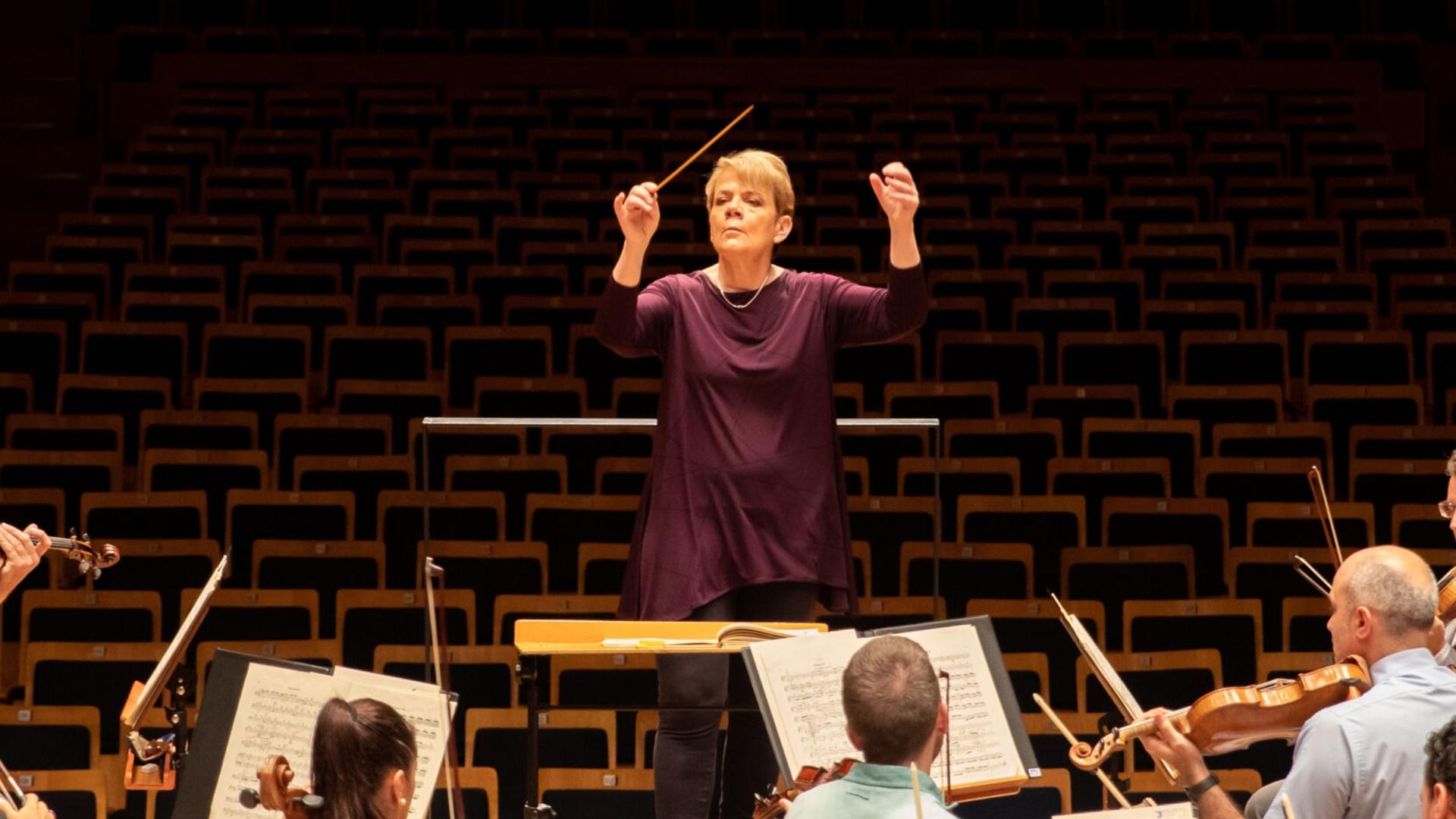
- Film
Docs: “The Conductor” – The Sensory Multitasking of Maestro Marin Alsop
The transportive power of music is given a rich, affecting showcase in The Conductor, a documentary from director Bernadette Wegenstein. It centers on and celebrates the life and work of trailblazer Marin Alsop, the first woman to lead a major orchestra in the United States.
Following its debut last year at the Tribeca Film Festival, the movie opens theatrically in select markets across the United States in February, with a broadcast premiere to follow on March 25, on PBS as well as its streaming platform.
Alsop was born in New York City, the only child of a pair of demanding, and frequently absent, musicians. Her parents forced her into studying piano (which she hated), but Alsop discovered her musical love with the violin, which she studied at the Juilliard School.
She recalls, during a school trip to a performance, seeing and being transfixed by the aforementioned Bernstein (who would go on to serve as her mentor) at nine years old, only to be told that girls could never become conductors. (Later in the movie, a reporter notes the cold statistical reality that it was easier and more likely for a female to become the leader of a G7 nation than the conductor of a major U.S. symphony.)
Faced with the high bar of this systemic barrier to entry, after graduating from Juilliard (first with a BA in music in 1977, then a Masters’ degree the following year), Alsop would instead pivot to popular music. She founded an all-female swing ensemble, String Fever, which would perform and travel the world together for almost 20 years.
It was during these years that Alsop met fashion financier and businessman Tamio Taki and impulsively pitched him the idea of starting his orchestra. He agreed, and in 1984 Alsop founded the 50-piece Concordia Orchestra, which specialized in 20th century American music. A broad and hard-fought array of other assignments would follow before Alsop would further change the landscape of classical music performance when, in 2007, she was appointed the 12th music director of the Baltimore Symphony Orchestra.
The Conductor gives a guided tour through the estimable career of its subject, a 2005 MacArthur Fellowship grantee. It traces the overlapping tenures of her time in Baltimore and eight years spent in São Paulo (where Alsop cultivated fans including former Brazilian president Fernando Henrique Cardoso, interviewed here), before landing in her current role as chief conductor of the prestigious Vienna Radio Symphony Orchestra.
But Alsop’s ability to discuss music in a way that is easily graspable for laypersons is a large part of The Conductor’s easygoing appeal. In explaining the “sensory multitasking” of conducting itself, and how it represents an attempt to emotionally touch people by actualizing a masterwork in real-time, Alsop beautifully elucidates the unique manner in which music can validate even as yet unrealized inner feelings. Her comparison of the calm she feels during early mornings to the same feeling she derives while conducting is also moving.
Wegenstein applies a fairly light directorial touch throughout, taking a mostly chronological tack but also sprinkling in a bit of biography. Alsop’s tireless work to inspire future generations — establishing a fellowship program for aspiring conductors from traditionally overlooked communities, setting up the “Orchkids” program in Baltimore — recommends an appreciation of her story every bit as much if not more so than her career.
Wegenstein additionally evokes cross-generational inspiration by intercutting, at various points during moments of performance, footage of kids held in rapturous attention.
However, the filmmaker takes a largely hands-off approach to Alsop’s present-day personal life. Not introducing her spouse, Kristin Jurkscheit, until a half-hour into the movie, Wegenstein scrupulously avoids framing her movie, in any notable way, as a gay story.
The overall domestic portion of The Conductor is quite small (Alsop’s teenage son is also seen, but never interviewed), and while the movie’s utter lack of interest in its subject’s sexuality is in some ways refreshing, one is left to wonder if it contributed in at least some way to the prejudice and pushback against her — particularly during her first appointment to the Baltimore Symphony Orchestra, which Alsop notes should have been a moment of joy, but was, in fact, a total nightmare.
While The Conductor connects most readily with arts-minded audiences who have an appreciation for so-called high culture, it also lands as a stirring portrait of a woman for whom, as she notes in the film, “can’t” is the most offensive four-letter word ever invented.
One of the movie’s most memorable moments is completely unconnected to music. As Alsop walks through the streets of Vienna, the camera lingers ever so slightly on a little girl nearby on her bicycle, who has no way at all of knowing who Alsop is. The look on her face — a dawning realization that this woman is important enough to have a camera crew following her around — speaks lasting volumes, in that one fleeting moment, of the value and power of representation.